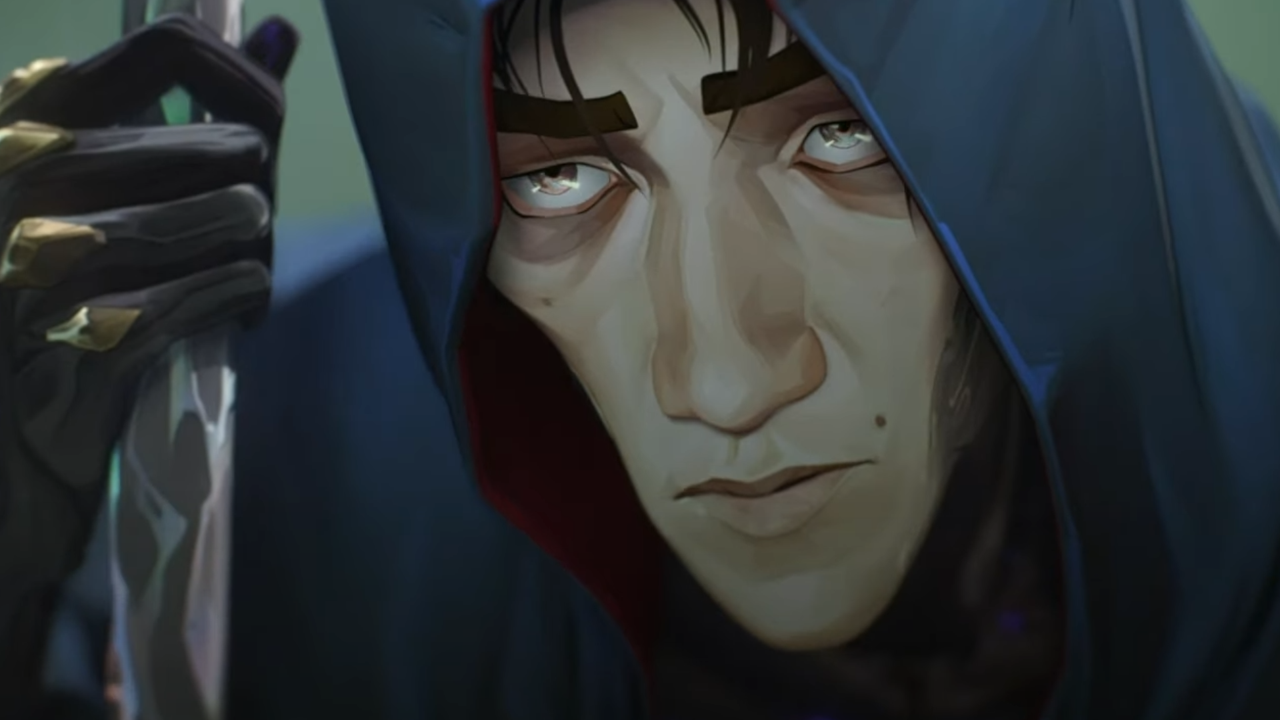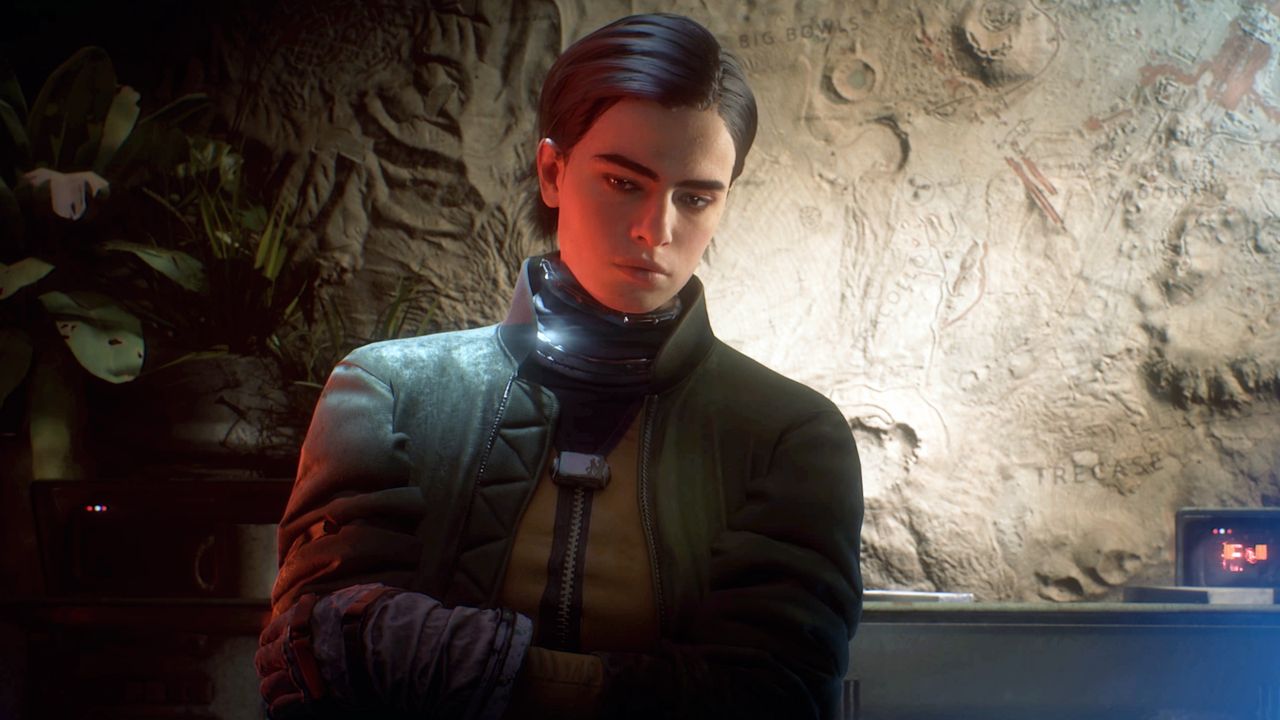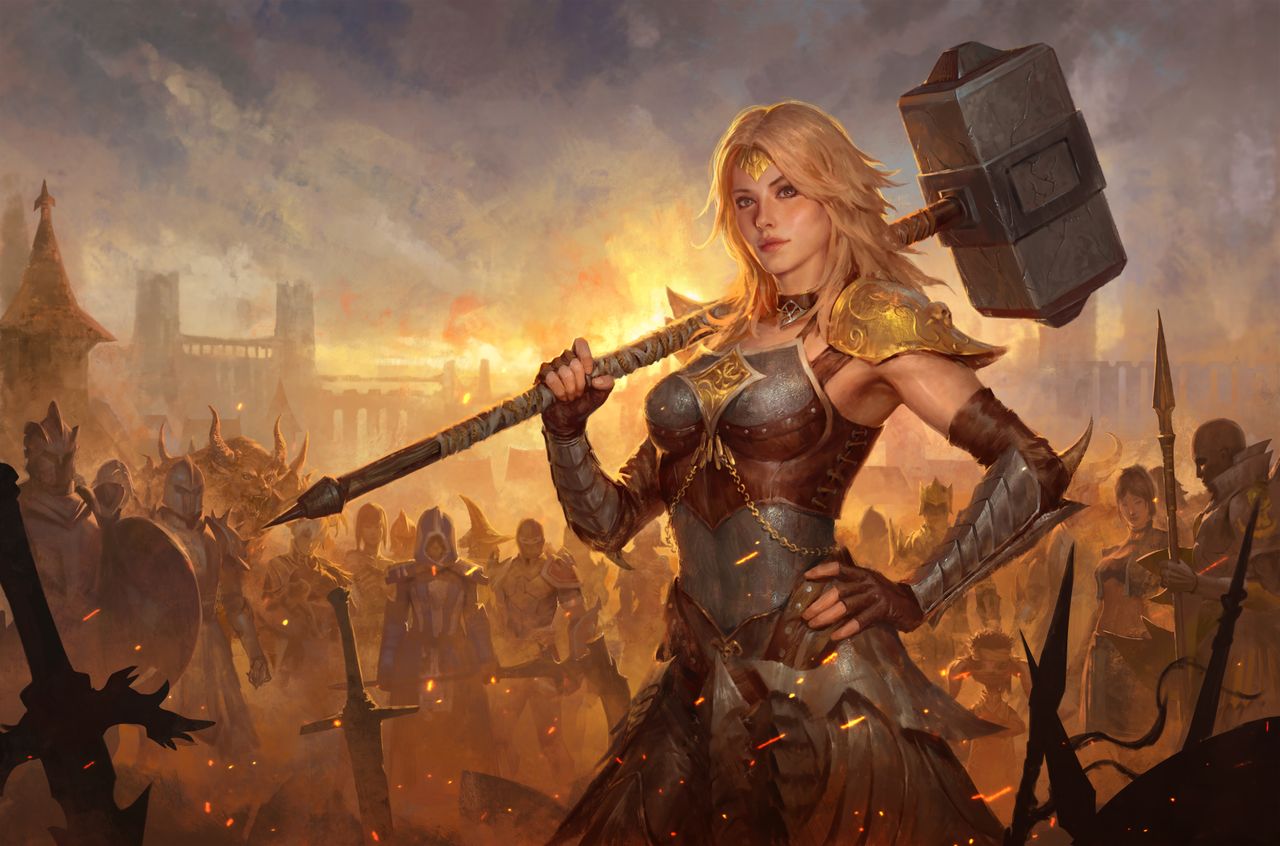Suicide Squad: Kill the Justice League’s forgettable enemies, empty missions, and incongruous gun obsession prove why superheroes and live service do not mix
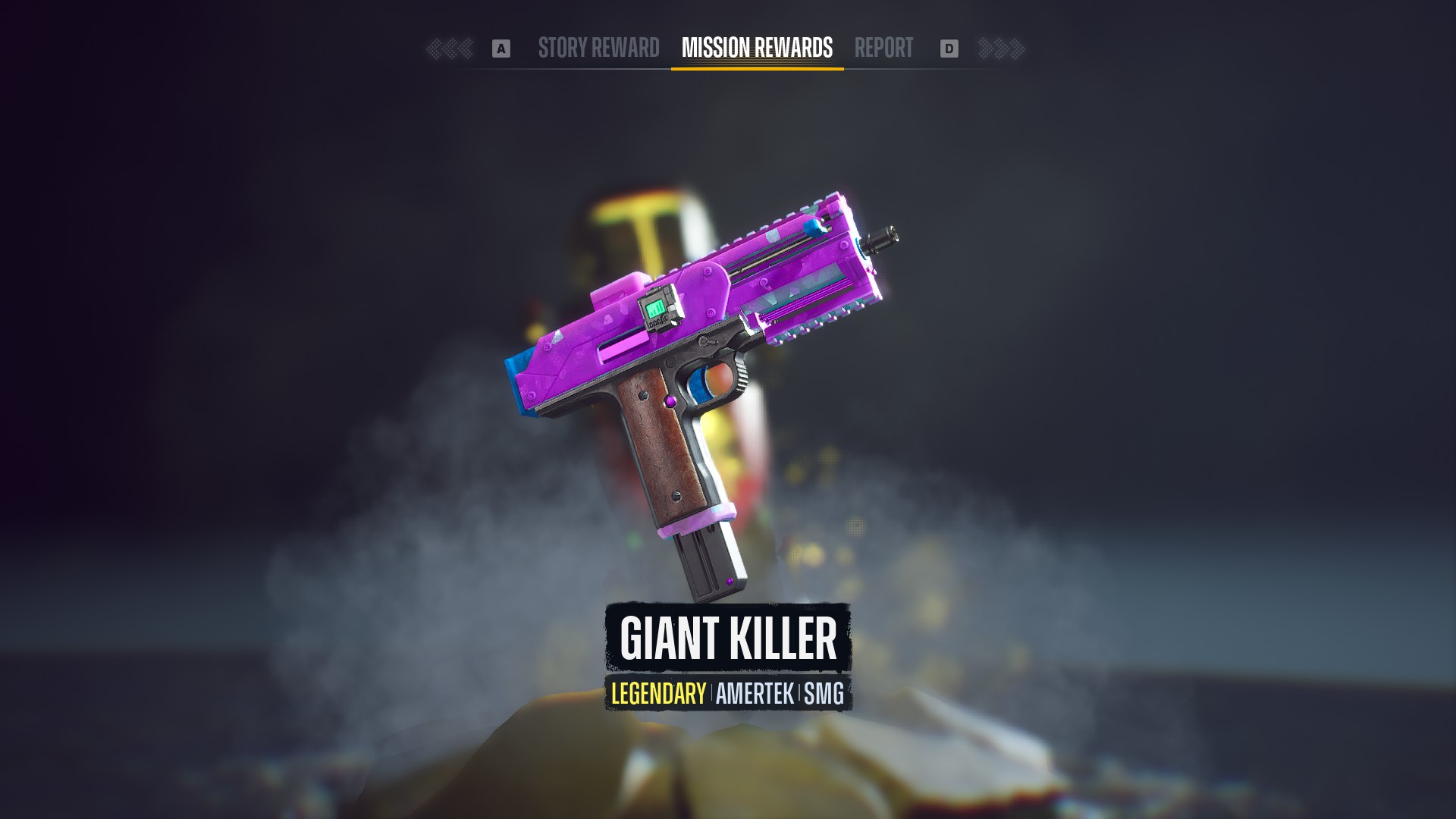
This time last year, we got our first proper in-depth look at Suicide Squad: Kill the Justice League, and I was pretty concerned. Now that I’ve gotten to play the final release for myself, my fears have unfortunately been confirmed. It’s a game that proves now what I said then: superheroes and live service is a dreadful combination. Please let this game put an end to this ill-fated combo once and for all.
Back when I wrote that, Marvel’s Avengers was the ultimate example. Though Suicide Squad: KTJL has some impressive qualities, I think it’s actually ended up faring even worse than that infamous flop. There’s an identity crisis right at its core that hamstrings what should have been one of the most exciting releases of the year.
Oh, and before we go further: yes, I understand that the Suicide Squad are not superheroes in the traditional sense, they’re supervillains or anti-heroes. Please just indulge me in the more convenient turn of phrase here—it doesn’t change what’s wrong.
So: what is wrong?
The guns

Suicide Squad: KTJL is a game all about guns. Shooting guns, looting guns, crafting guns, comparing guns. Why? Though the Suicide Squad is admittedly more likely to wield guns than Superman or Batman, they immediately feel a poor fit for a third-person looter-shooter.
Assassin Deadshot makes some sense, at least, and you can maybe make an argument for Harley as a gal who likes a gun, though she’s far more iconic as someone who gets up-close-and-personal. What on earth is King Shark, a hulking demi-god monster, doing wielding a shotgun? And why is the guy literally called Captain Boomerang only using his namesake weapon for the occasional melee attack while he sprays bullets all over?
There’s nothing wrong with reinterpreting these characters to fight in new ways, but the motivation here isn’t finding a new take on the Suicide Squad, it’s finding mechanics that gel best with a live service business model. There’s a reason Destiny is such a successful example of a live service game—guns make for exciting loot drops, and a focus on shooting levels the playing field between otherwise different characters. It avoids the problem Avengers wrestled with of having to try and develop bespoke combat systems for each hero (and ultimately producing a load of mostly very familiar-feeling melee loops).
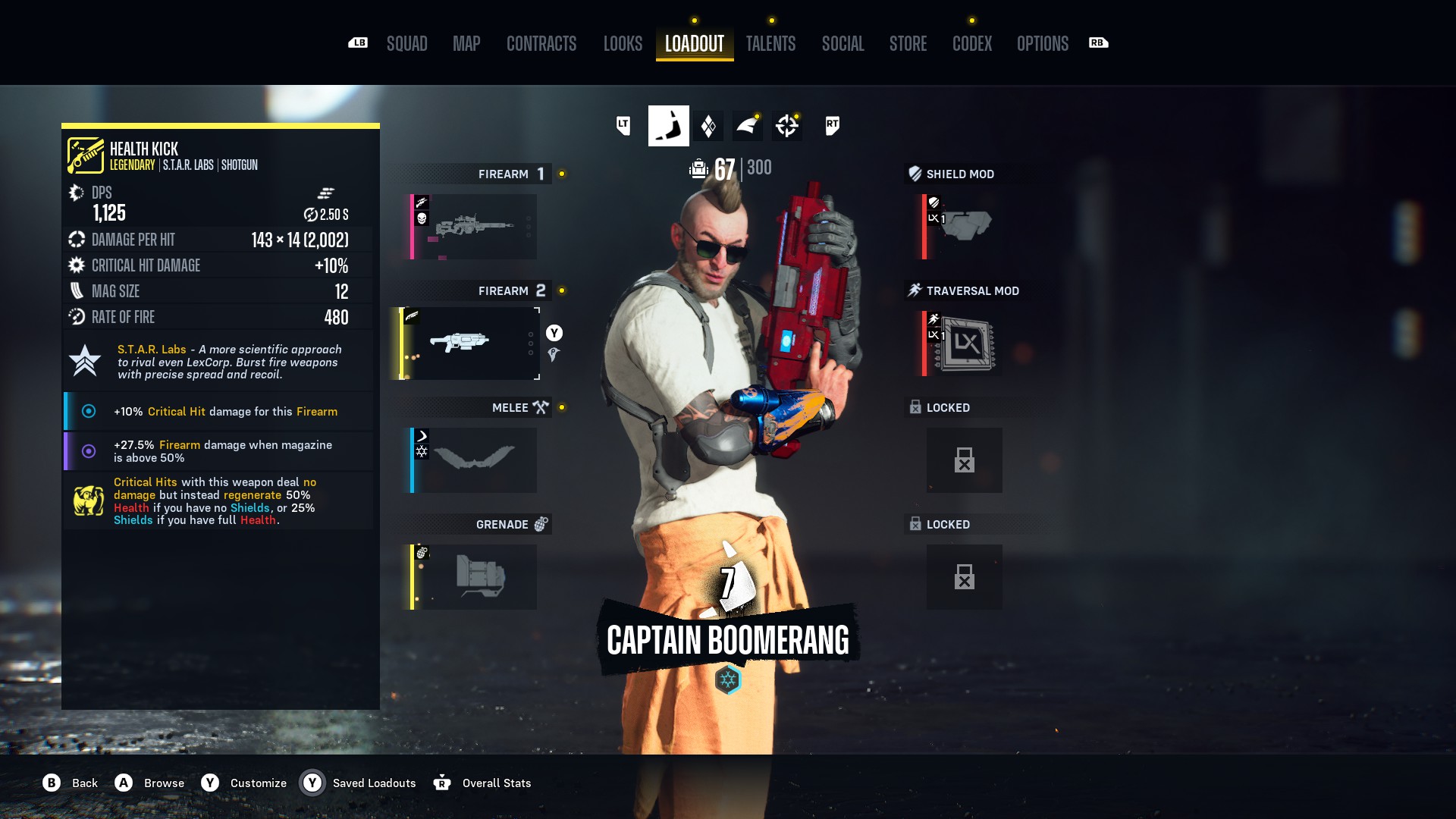
It’s like playing a Superman game where 90% of your time is spent working on Clark Kent’s model train collection.
But it’s completely at odds with the superhero fantasy. What’s exciting about these characters is that they’re super. They’re innately special in some way. When they have cool gear, it’s signature gear—fun gadgets and iconic weapons. Their power doesn’t rest in the most recent assault rifle they looted off a mutant, and levelling the playing field between them only means filing off a load of the things that make them cool and distinctive.
It’s a problem in combat, but it’s particularly a problem outside of it, where you spend an obnoxious amount of time poring over gun stats, recruiting other iconic and interesting villains reduced to just vendors for more guns, managing resources used for crafting more guns… systems like this have a place in gaming, but here they pull so much focus away from the larger-than-life characters the game is supposed to be about. It’s like playing a Superman game where 90% of your time is spent working on Clark Kent’s model train collection.
The missions
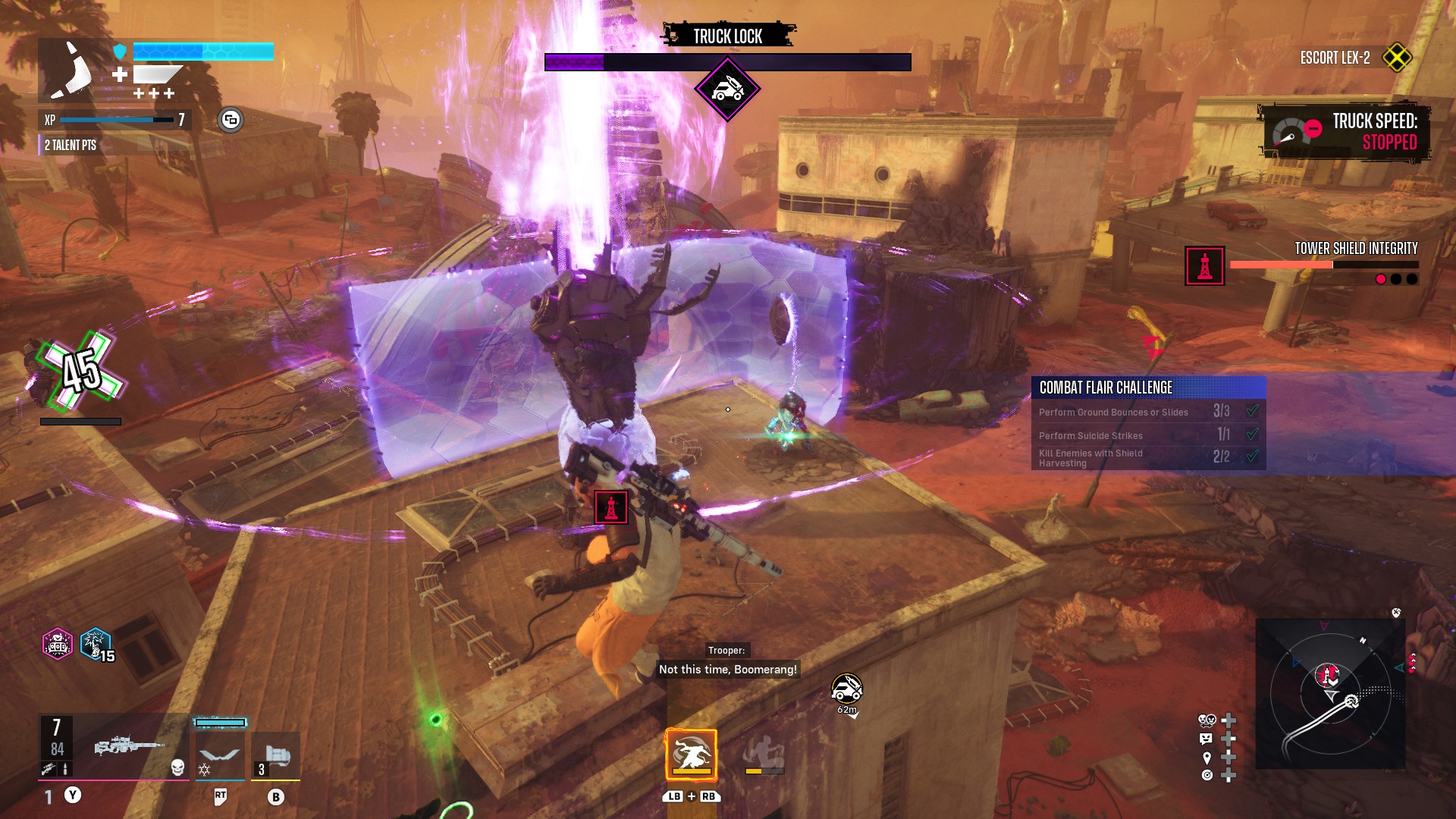
The premise of Suicide Squad: KTJL is electric: an underdog team of supervillains, dropped into enemy territory, scrambling to find ways of defeating the most iconic and powerful heroes of the DC setting. But what do you actually do in the game? You capture objectives and shoot big purple glowing things.
The lavish cutscenes make great pains to set up these exciting story moments and pivotal confrontations, but any time you’re actually sent out to do some fighting, you’re always doing some form of barebones repeatable content. Its core story missions would be the grindy side missions people tell you not to bother with in any normal open world game—survival against waves of enemies, keeping objectives clear so a bar can fill up, and collecting things to deposit in other things, all of it completely abstract and utterly divorced from any sense of what’s happening in the world and the narrative.
It feels like you’re guiding the Suicide Squad through some gauntlet of game show challenges, not reclaiming the city. For me it’s gotten to the point where I’m relieved whenever I get to do one of Riddler’s hopelessly simple jump-through-rings-as-fast-as-possible challenges—at least leaping around the city feels a bit superheroic, more so than fighting battles with completely arbitrary win conditions.
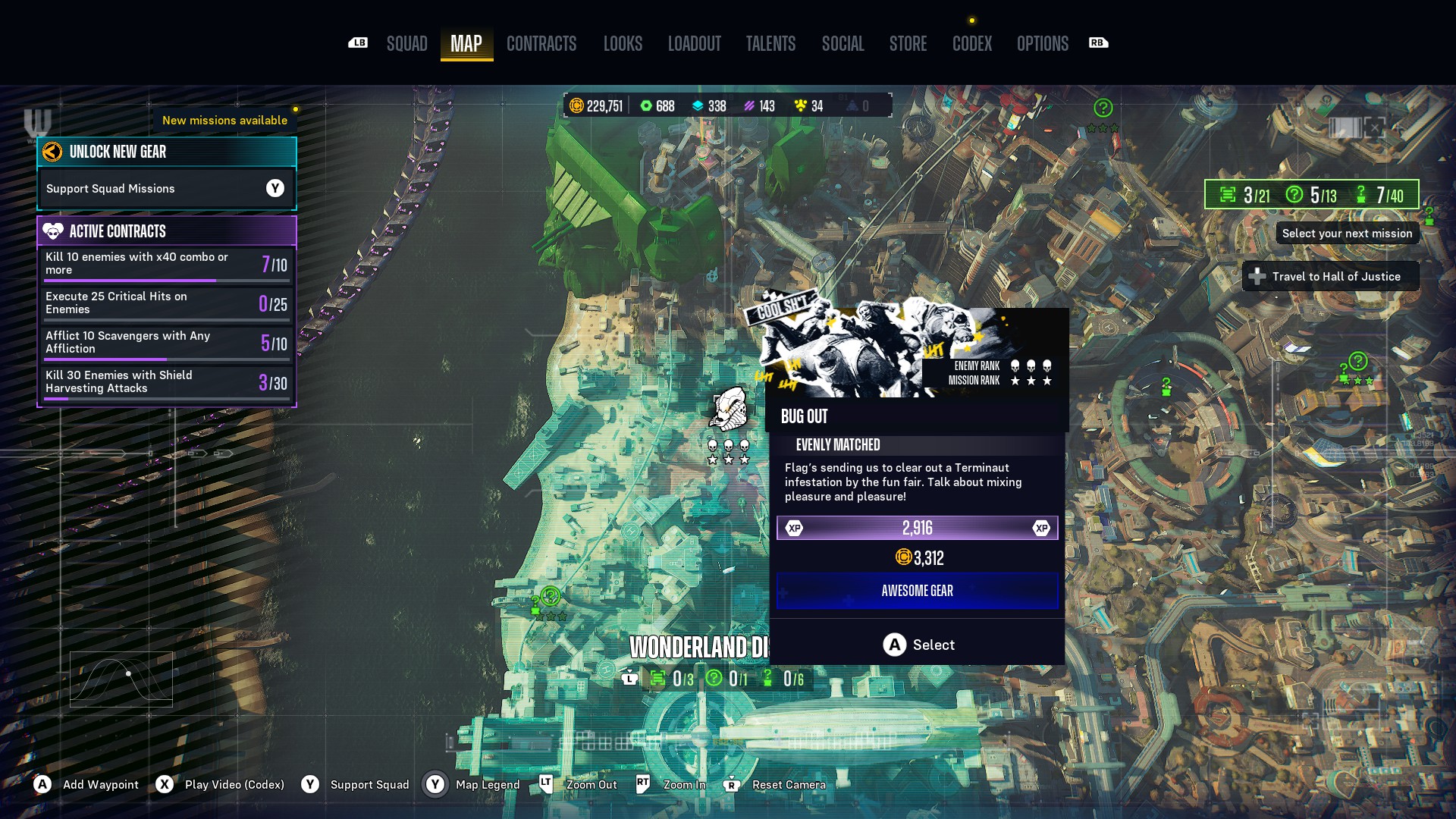
For all its faults, even Marvel’s Avengers did at least have a load of good, authored story missions to enjoy before it hit the grind. Suicide Squad: KTJL is all grind.
It’s clear that, faced with the prospect of having to have some kind of endgame ready at launch, Rocksteady made the choice to simply build the entire game out of the same repeatable content that’ll continue on past the story’s conclusion. That’s wise, in its way—it ensures the team spends as much time as possible making missions players will ultimately get the most time out of, rather than having an amazing 10 hour campaign followed by an anaemic 40 hour endgame.
The problem is, an amazing 10 hour campaign might have actually made me feel superheroic—and given me something to pull me through the story to that endgame. For all its faults, even Marvel’s Avengers did at least have a load of good, authored story missions to enjoy before it hit the grind. Suicide Squad: KTJL is all grind, and it utterly undermines any fun you might get out of playing its characters.
The enemies
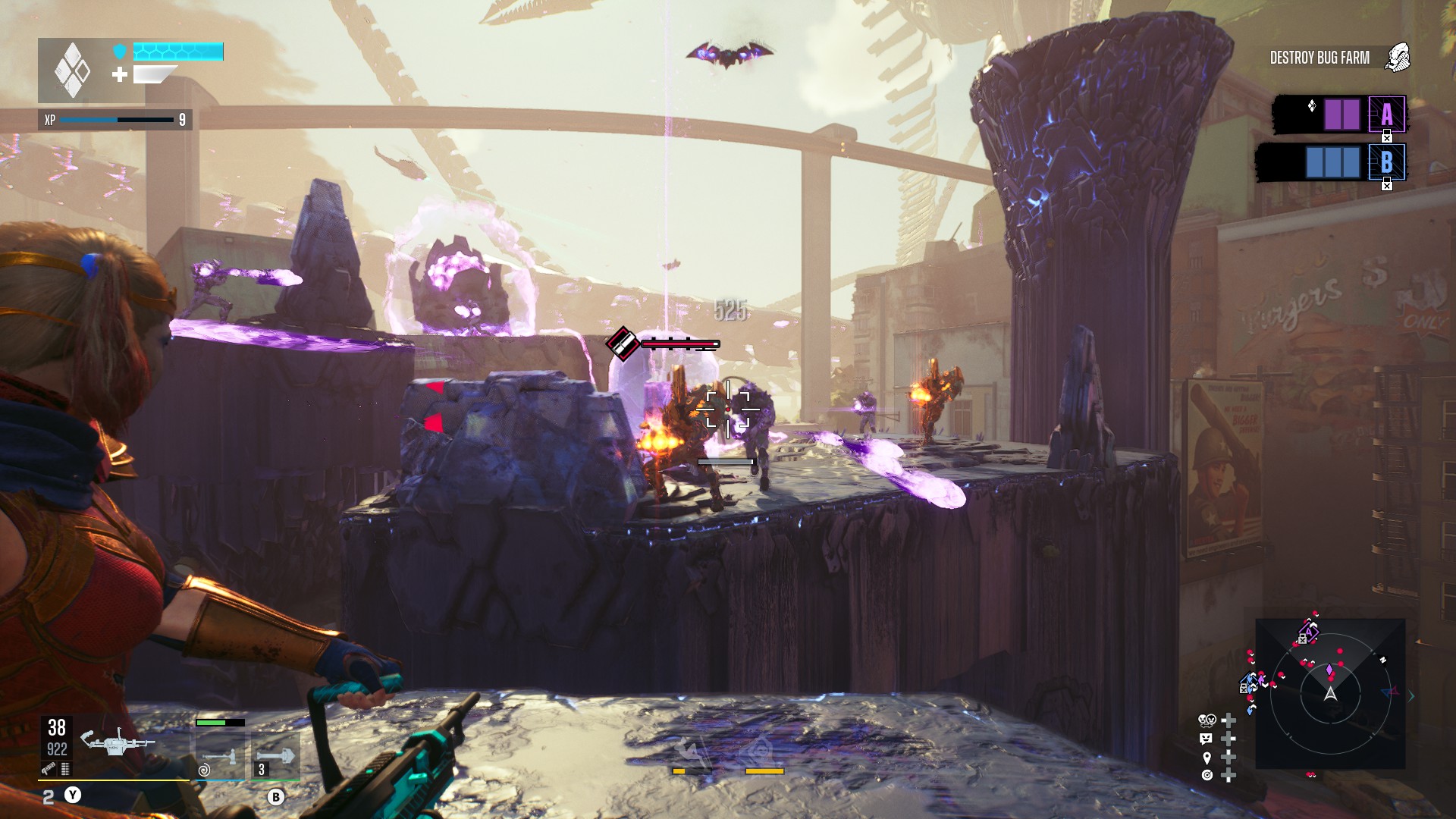
A looter shooter needs enemies to shoot and loot. A four-player co-op looter shooter needs quadruple the amount, to keep everyone occupied. And a live service looter shooter needs to ensure the enemies keep coming in an endless loop, to keep you coming back.
So it is that Metropolis is stuffed to the gills with amorphous, grey monsters who teleport in reinforcements any time a rooftop is in danger of going unoccupied. Faceless and nameless, they shamble towards you in droves winding up their telegraphed attacks, or rain down fire on you from above.
Superhero stories are about grand clashes between iconic characters—that’s not always easy to achieve in videogames, which demand a steady flow of repeatable action, but Suicide Squad: KTJL couldn’t lean further into that weakness. Your repetitive battles against these bland foes blur into one grey and purple blend. There’s definitely some fun to be had in the bouncy dynamism of fights, but there’s so little personality in them—your character’s identity struggles to break through, and your enemies have no identity at all. Generic foes there to be mowed down with generic guns over meaningless patches of rooftop.
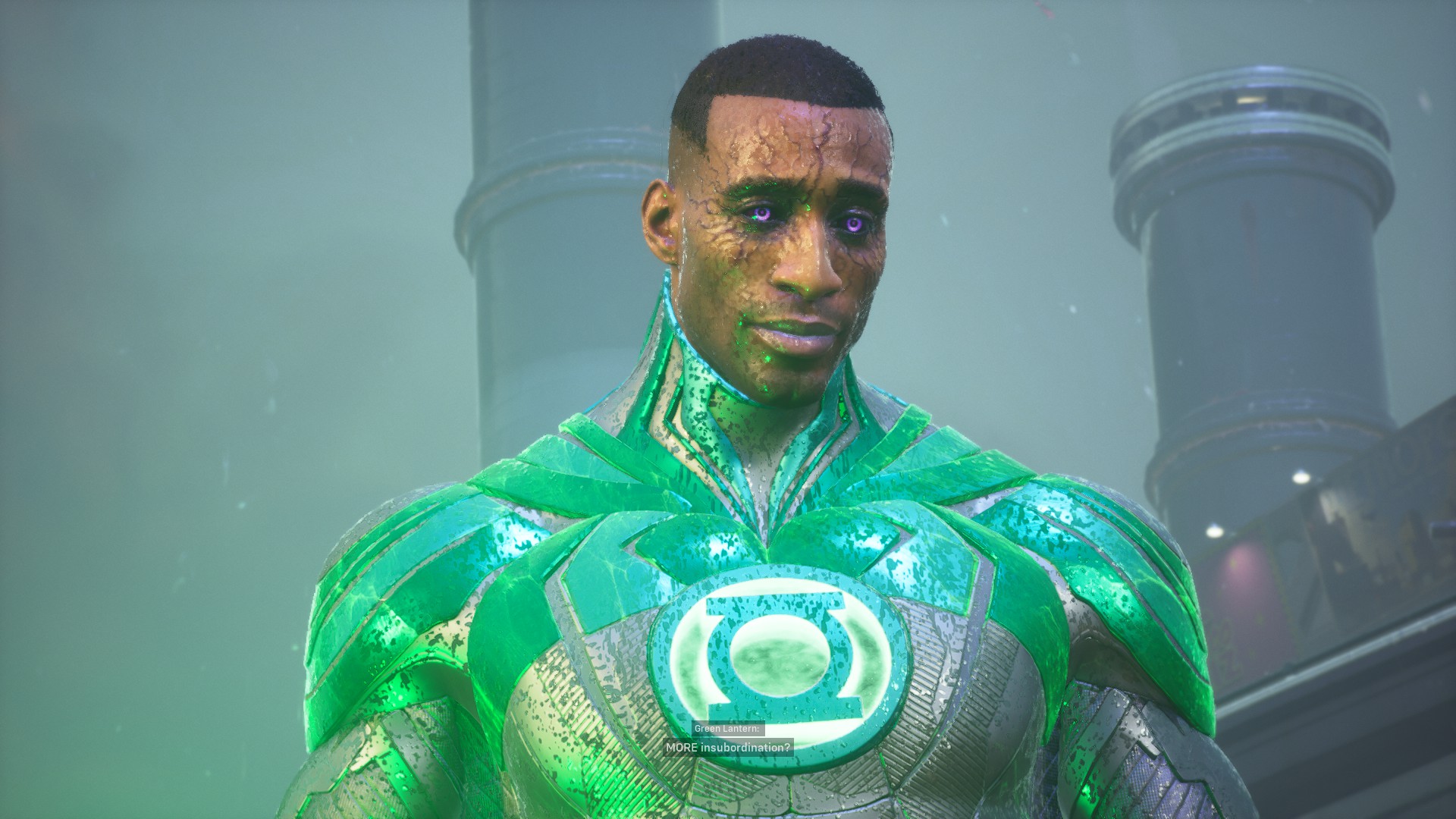
The result is a game constantly contriving to turn iconic characters into big, spongey MMO bosses that simply go down once they’ve been shot enough.
Where the game should shine is in its boss battles, big fights against some of the most recognisable superheroes of all time. But they have to be four-player gunfights, so the result is a game constantly contriving to turn iconic characters into big, spongey MMO bosses that simply go down once they’ve been shot enough.
The loop of doing empty missions to earn a gadget that makes the next member of the most famously bulletproof group of characters in history vulnerable to your level 10 sniper rifle couldn’t feel more narratively empty, no matter how many expansive cutscenes it’s wrapped in. The need for the game to be a live service shooter not only clashes with its superheroic cast, it hamstrings the entire premise of the story.
Let it die with the Justice League
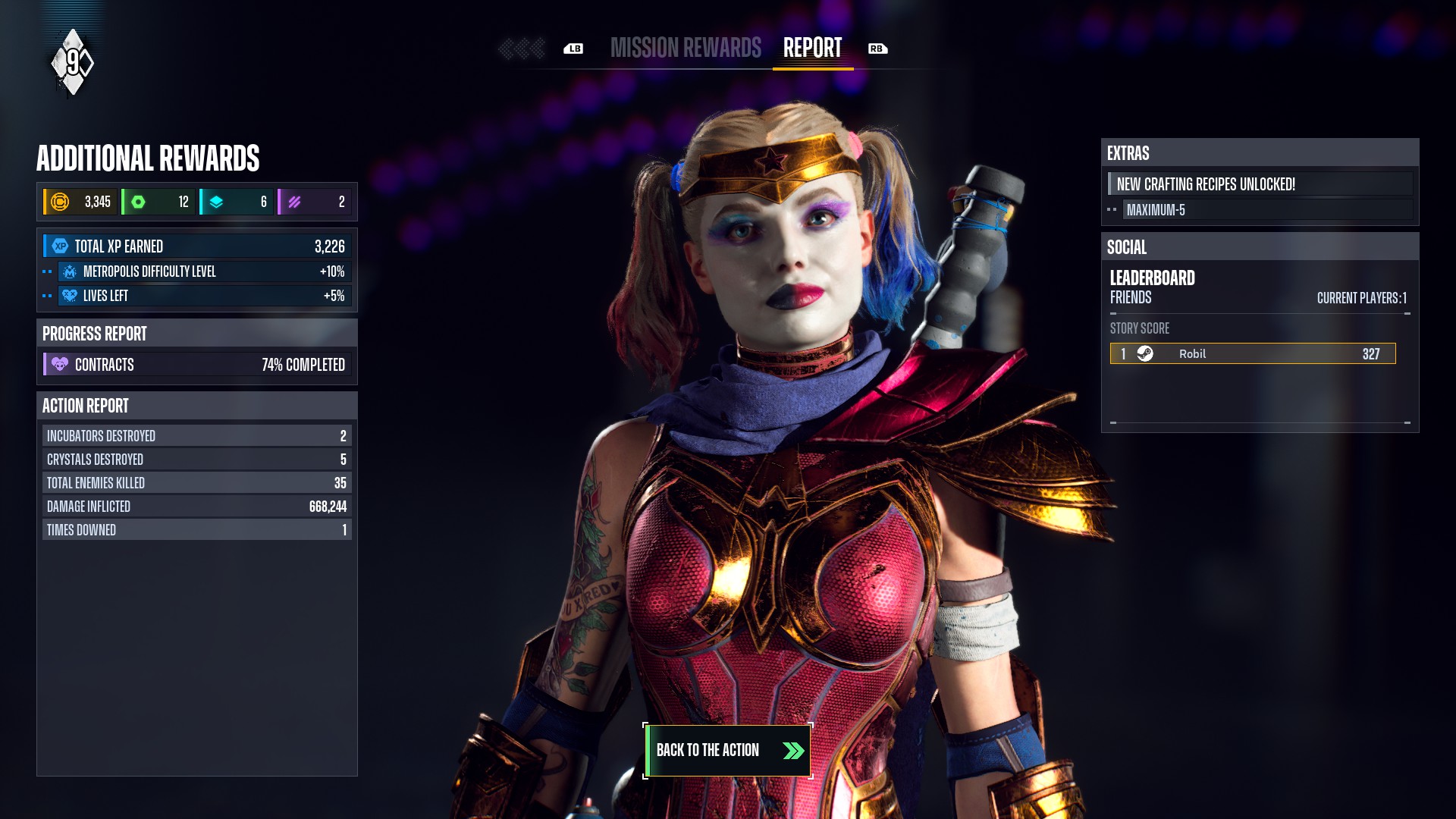
It brings me no joy or satisfaction to say all this. It’s not that long ago that Rocksteady was making the Arkham games—not only some of the best superhero games ever made, but games that impacted how the entire industry approached combat and traversal. They made you feel like Batman. It’s been so exciting imagining what a follow-up to that incredible legacy would end up looking like.
But after a decade of work, Suicide Squad: KTJL just feels poisoned by its pursuit of already dated trends. There’s clearly a huge amount of talent and passion behind it—from its slick animation to its excellent vocal performances to its sprawling open world, it’s a really lush offering in many ways. But all that time and money was poured into trying to make the world’s tastiest ham and peppermint sandwich. Some flavours simply do not go together no matter how hard you try.
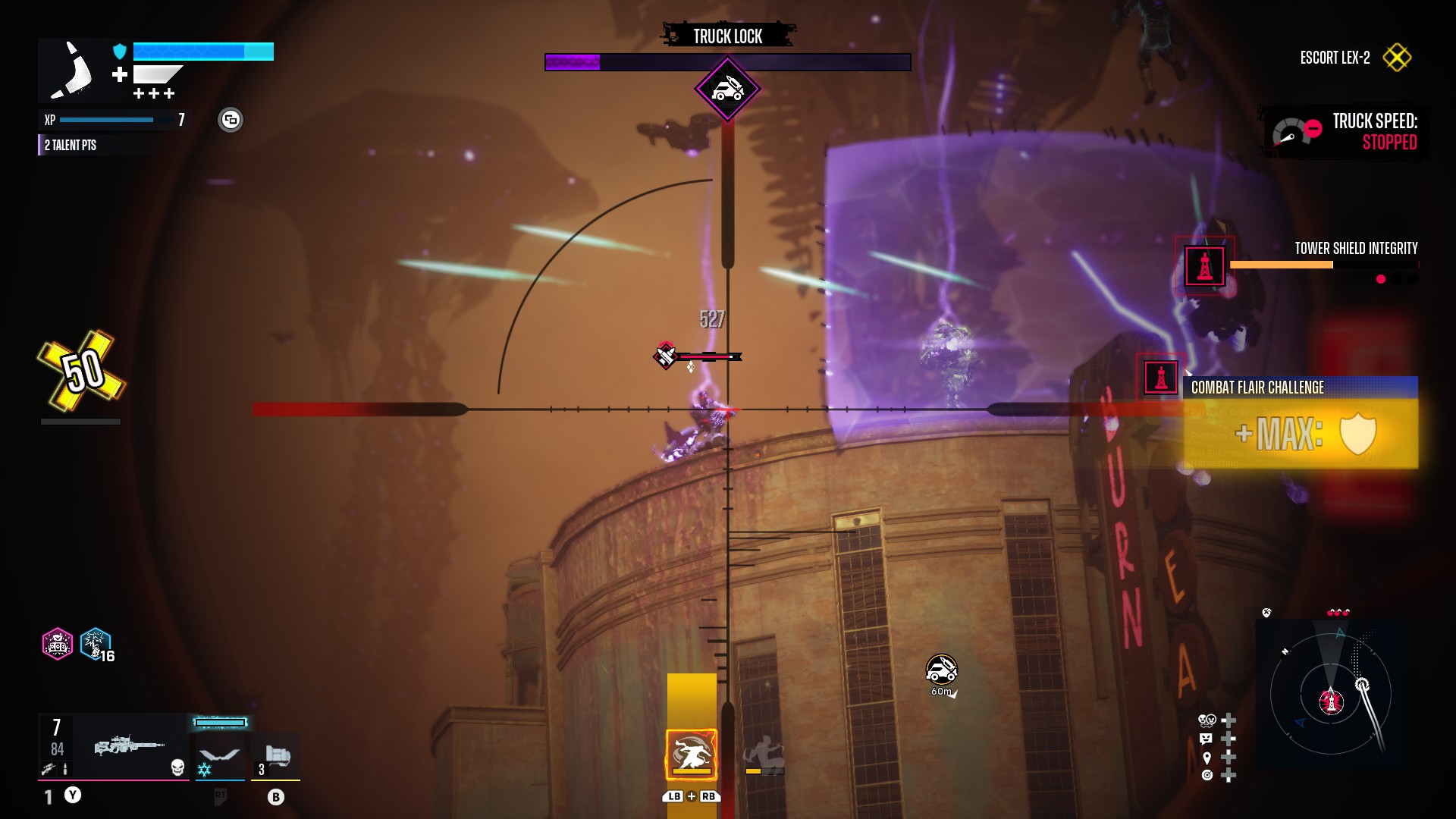
Both Marvel’s Avengers and Suicide Squad: KTJL had the money, the time, and the talent to be industry-shaking hits.
We’re way past time for publishers to accept that, just like the MMO boom and the MOBA boom and the battle royale boom, just because something is making someone a lot of money, doesn’t mean you’re going to be able to make that someone you. And that goes double for trying to combine that futile grab for live service success with a genre that is never going to be able to support it. Both Marvel’s Avengers and Suicide Squad: KTJL had the money, the time, and the talent to be industry-shaking hits. Even Gotham Knights should’ve been a welcome return for the Bat Family. Instead, all three were completely undone by a few key wrongheaded decisions, whether they were dictated to the studio from the top or originated within it.
Please let Suicide Squad: KTJL be the last sad example of this combination, and chalk up superhero live service as a failed experiment. We’ve got titles based on Wonder Woman, Iron Man, Black Panther, Wolverine, Blade, and more still on the horizon. Which will hit and which won’t, it’s too early to say—but you can be sure that none of them will benefit from having a season pass, a loot treadmill, or an endgame.

